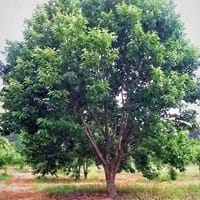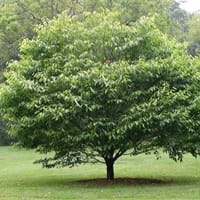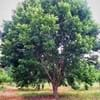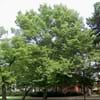Life Span
Perennial
Perennial
Origin
North America, Northeastern United States, Mid-Atlantic United States, Southeastern United States, Canada
North America, United States, Northeastern United States, Mid-Atlantic United States, Southeastern United States, Central United States, South-Central United States, Texas, Mexico, Europe
Types
Not Available
Carpinus caroliniana caroliniana, Carpinus caroliniana virginiana
Number of Varieties
Not Available
Habitat
Deciduous forests, Forest margins
Not Available
USDA Hardiness Zone
5-8
3-9
Sunset Zone
2a, 2b, 3a, 3b, 4, 5, 6, 7, 8, 9, 14, 15, 16, 17
1a, 1b, 2a, 2b, 3a, 3b, 4, 5, 6, 7, 8, 9, 14, 15, 16, 17
Habit
Oval or Rounded
Spreading
Flower Color
Gold, Light Green, Light Yellow, White
Yellow, Yellow green
Flower Color Modifier
Bicolor
Bicolor
Fruit Color
Light Green, Sienna, Chocolate
Brown
Leaf Color in Spring
Green
Green, Light Green
Leaf Color in Summer
Green
Dark Green
Leaf Color in Fall
Yellow, Yellow green, Gold
Yellow, Yellow green, Orange Red
Leaf Color in Winter
Not Available
Not Available
Leaf Shape
Toothed
Pinnate
Plant Season
Spring, Summer, Fall
Summer, Fall
Sunlight
Full Sun, Partial Sun
Full Sun, Partial Sun, Partial shade, Full Shade
Type of Soil
Clay, Loam
Clay, Loam
The pH of Soil
Acidic, Neutral
Acidic, Neutral
Soil Drainage
Well drained
Average
Bloom Time
Early Summer
Spring
Tolerances
Not Available
Wet Site
Where to Plant?
Ground
Ground
How to Plant?
Seedlings, Stem Planting
Not Available
Plant Maintenance
Medium
Medium
Watering Requirements
Needs very little water
Requires regular watering
In Summer
Lots of watering
Lots of watering
In Spring
Moderate
Moderate
In Winter
Average Water
Average Water
Soil pH
Acidic, Neutral
Acidic, Neutral
Soil Type
Clay, Loam
Clay, Loam
Soil Drainage Capacity
Well drained
Average
Sun Exposure
Full Sun, Partial Sun
Full Sun, Partial Sun, Partial shade, Full Shade
Pruning
Cut back all stems to the same height, Pinch or prune as they grow to promote branching and bushiness, Remove damaged leaves, Remove dead branches, Remove dead leaves
Requires very little pruning
Fertilizers
14-14-14 Fertilizer, Compost, General purpose liquid or granular fertilizer
All-Purpose Liquid Fertilizer
Pests and Diseases
Chestnut Blight
Canker, fungus
Plant Tolerance
Drought
Wet Site
Flowers
Insignificant
Yes
Flower Petal Number
Not Available
Not Available
Fragrant Leaf
No
Not Available
Foliage Texture
Medium
Medium
Foliage Sheen
Matte
Glossy
Attracts
Bees, Birds, Deers
Not Available
Allergy
conjunctivitis, Vomiting
Not Available
Aesthetic Uses
Showy Purposes
Showy Purposes, small hedge
Beauty Benefits
Not Available
Good for the Scalp, Stops hair loss
Environmental Uses
Air purification, Wildlife
Air purification
Medicinal Uses
Arthritis, Cough, Sore throat, Swelling
Anxiety, Bleeding, Cold, Cough, Cuts, Eye Infection, Fatigue, Fights Depression, Insomnia, Menstrual Disorders, Wounds
Part of Plant Used
Sap, Wood
Whole plant
Other Uses
Decorative veneers, flooring, paneling, Used in Furniture, Used in pulpwood and lumber production
Used as firewood, Used as Ornamental plant, Used for its medicinal properties, Used for woodware
Used As Indoor Plant
No
No
Used As Outdoor Plant
Yes
Yes
Garden Design
Edible, Feature Plant, Shade Trees
Hedges, Screening / Wind Break, Shade Trees, Street Trees
Botanical Name
CASTANEA dentata
CARPINUS caroliniana
Common Name
American Chestnut
American Hornbeam, Musclewood, blue-beech, Ironwood
In Hindi
अमेरिकी शाहबलूत
अमेरिकी हानबीन
In German
Amerikanische Kastanie
Amerikanische Hainbuche
In French
Châtaignier d'Amérique
Charme de Caroline
In Spanish
Castanea dentata
Carpinus caroliniana
In Greek
american καστανιάς
american γαύρο
In Portuguese
castanea americana
Carpinus caroliniana
In Polish
Kasztan amerykański
Grab amerykański
In Latin
English castaneis
american hornbeam
Phylum
Magnoliophyta
Magnoliophyta
Class
Magnoliopsida
Magnoliopsida
Family
Fagaceae
Betulaceae
Clade
Angiosperms, Eudicots, Rosids
Angiosperms, Eudicots, Rosids
Tribe
Not Available
Not Available
Subfamily
Not Available
Not Available
Number of Species
Not Available
Season and Care of American Chestnut and American Hornbeam
Season and care of American Chestnut and American Hornbeam is important to know. While considering everything about American Chestnut and American Hornbeam Care, growing season is an essential factor. American Chestnut season is Spring, Summer and Fall and American Hornbeam season is Spring, Summer and Fall. The type of soil for American Chestnut is Clay, Loam and for American Hornbeam is Clay, Loam while the PH of soil for American Chestnut is Acidic, Neutral and for American Hornbeam is Acidic, Neutral.
American Chestnut and American Hornbeam Physical Information
American Chestnut and American Hornbeam physical information is very important for comparison. American Chestnut height is 1,830.00 cm and width 2,130.00 cm whereas American Hornbeam height is 610.00 cm and width 1,070.00 cm. The color specification of American Chestnut and American Hornbeam are as follows:
American Chestnut flower color: Gold, Light Green, Light Yellow and White
American Chestnut leaf color: Green
American Hornbeam flower color: Yellow and Yellow green
- American Hornbeam leaf color: Green and Light Green
Care of American Chestnut and American Hornbeam
Care of American Chestnut and American Hornbeam include pruning, fertilizers, watering etc. American Chestnut pruning is done Cut back all stems to the same height, Pinch or prune as they grow to promote branching and bushiness, Remove damaged leaves, Remove dead branches and Remove dead leaves and American Hornbeam pruning is done Requires very little pruning. In summer American Chestnut needs Lots of watering and in winter, it needs Average Water. Whereas, in summer American Hornbeam needs Lots of watering and in winter, it needs Average Water.





